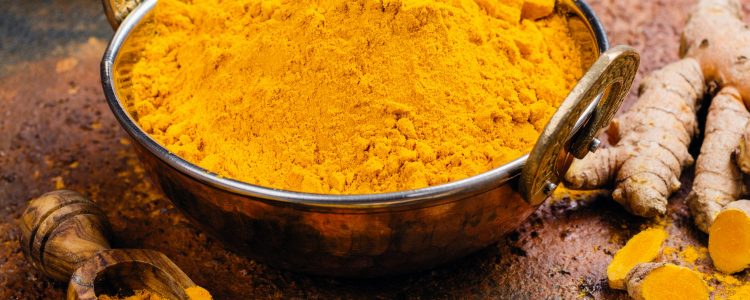TURMERIC supplements – an update

TURMERIC
I wrote about Turmeric in May 2015, covering its health benefits and supplement information, but due to its ever increasing popularity and the swiftness of scientific developments, I thought it worth an update.
Turmeric is currently enjoying rock-star status with many competing supplement companies producing a deluge of persuasive marketing that highlights its potent anti-inflammatory effects, mainly directed towards easing joint pain. In the nutrition world we also know – from preliminary research – of its ability to inhibit all sorts of cancer cells, but with many chronic, degenerative health conditions having inflammation as a common denominator, a natural and effective anti-inflammatory – with no side effects – has huge commercial potential. So how reliable are these therapeutic claims?
First and foremost it’s very important to distinguish between basic TURMERIC (which is a yellow spice/powder derived from grinding the Turmeric root), and CURCUMIN, which is the collective term for the Curcuminoid polyphenolic compounds that can be extracted from the Turmeric root. Because herein lies the truth – or otherwise – of the health claims.
It is the extracted Curcuminoid compounds that are the therapeutically active components, but they make up – by weight – less than 3% of the actual turmeric root, or turmeric powder. So you can see how frothy turmeric/golden lattés and the occasional Indian takeaway will not achieve the health claims being published by scientific studies that will have used highly concentrated extracts of the curcuminoid compounds. Likewise, many of the cheaper Turmeric supplements are simply hitching a ride on the popular bandwagon, but contain therapeutically insignificant quantities of the crucial Curcuminoid extracts.
So if you have sourced a high quality supplement, with therapeutically sufficient quantities of Curcuminoid compounds, will the health claims then stand up to scrutiny? The answer is – yes.
A basic Pubmed search of the keyword CURCUMIN throws up over 20,000 papers! The scientific world is interested with good reason and studies are literally backing up what Asia and the natural health world have known for a long, long time, its rock star status is well founded. Research is progressing at speed with Pharmaceutical applications currently accounting for a whopping 50% of the current total industry demand.
Multiple studies have shown that Curcumin helps with joint aches and pains by lowering the levels of 2 enzymes in the body that cause inflammation. More recent research has provided evidence of its neuroprotective effects by reducing brain inflammation and amyloid plaques. These cognitive-enhancing properties may help to delay or prevent the development of neurodegenerative conditions like Alzheimer’s and Parkinson’s disease.
Other clinical trials suggest it has antimicrobial effects, can reduce depression and could have a therapeutic role in diseases such as inflammatory bowel disease, ulcerative colitis, colon cancer, pancreatic cancer, high cholesterol, atherosclerosis, pancreatitis, psoriasis, arthritis, lupus and acne. Research is ongoing – and promising.
SUPPLEMENTS, what to look out for –
As always with supplements, it pays to get some professional advice, and if the product is cheap, it’s unlikely to have sufficient levels of the key extracts or biologically active compounds, to have any therapeutic potential, so save your money. Aim for products preferably paired with ‘added Piperine’, (black pepper), or a compound which hugely aids absorption and keeps the curcuminoids biologically active in the body for longer, for otherwise they are poorly absorbed and metabolically processed and eliminated from the body very quickly.
So what percentage of the capsule needs to be curcuminoids to be therapeutically effective? For any systemic purpose around the body, like joint pain reduction (requiring absorption from the intestines), then an oral dose of curcumin in the range of 200-500mg would be required, as long as it was paired with something to aid absorption. Without such enhancement, then too little will be absorbed and even doses of up to 4,000mg curcumin may be wholly ineffective. It’s good to know it has an extremely large safety threshold, with doses up to 8,000 mg curcuminoids in humans, showing little adverse effects at all.
I have 2 personal favourites:
“Natruflex”, (by The Naked Pharmacy) 2 capsules of which contain 800mg (95% of the Turmeric extract is curcuminoids) paired with black pepper extract, for improved absorption and retention, so this product more than meets the essential criteria.
“Curcuma longa extract” (by Bonusan) 2 capsules of which contain 500mg (80% of the Turmeric extract is curcuminoids) paired with bio-curcumin/sesquiterpenoids for greater absorption and retention).
References
Chainani-Wu N (2003) Safety and anti-inflammatory activity of curcumin: a component of tumeric (Curcuma longa). J Altern Complement Med. 9(1):161-8.
Morales I et al., (2017) The Natural Product Curcumin as a Potential Coadjuvant in Alzheimer’s Treatment. J Alzheimers Disease. 60(2):451-460.
Shanmugam MK et al., (2015) The multifaceted role of curcumin in cancer prevention and treatment. Molecules. 20(2):2728-69.
Goel A et al., (2008) Curcumin as “Curecumin”: from kitchen to clinic. Biochem Pharmacol. 75(4):787-809.
Anand P et al., (2007) Bioavailability of curcumin: problems and promises. Molecular Pharmaceutics 4(6):807-18.https://www.ncbi.nlm.nih.gov/pubmed/17999464
Virmani A et al., (2013) Food, nutrigenomics, and neurodegeneration–neuroprotection by what you eat! Molecular Neurobiology 48(2):353-62. https://www.ncbi.nlm.nih.gov/pubmed/23813102
